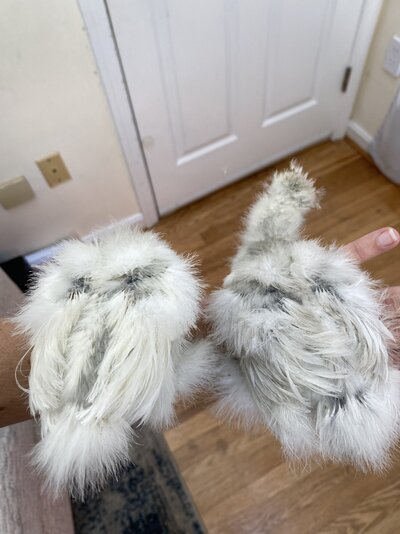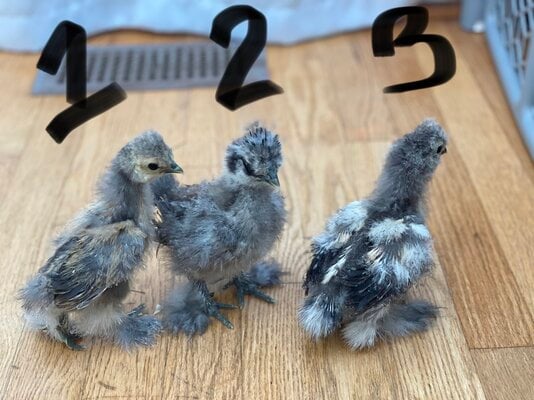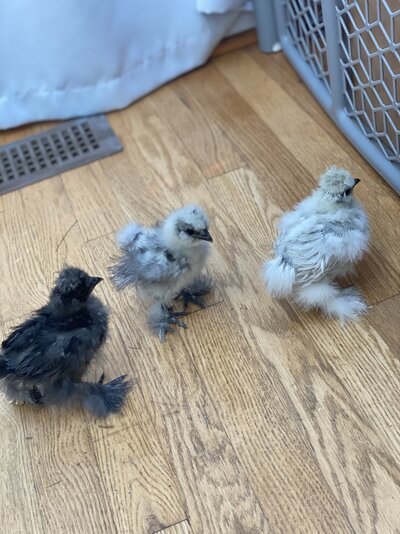Oooh, I wanna jump on this thread! Hopefully someone can tell me what I may be looking at with these colors. I’ve spent hoursssss looking for examples on line with no luck 
The photo with the two whites - the one on the left is from a white/white mix - has a bit of a yellow undertone. I’m curious about the one on the right - more blue undertone. Is that possible a champagne or lavender?
The photo with three partridges… #1 looks like it’s feathering in as a standard Partridge coloration. #2 is feathering in that darker slate gray/brownish color all over and #3 is getting cream covered feathers… whaaaat?!
The photo with the two whites - the one on the left is from a white/white mix - has a bit of a yellow undertone. I’m curious about the one on the right - more blue undertone. Is that possible a champagne or lavender?
The photo with three partridges… #1 looks like it’s feathering in as a standard Partridge coloration. #2 is feathering in that darker slate gray/brownish color all over and #3 is getting cream covered feathers… whaaaat?!





